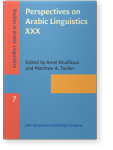The syntax of negative coordination in Jordanian Arabic
Coordination constructions can either conjoin or disjoin phrases or clauses. Languages vary in the strategies employed to establish these logical relationships, creating distributional contrasts and co-occurrence restrictions on the coordination particles. This paper describes negative coordination and puts forward an analysis for this unexplored topic in Arabic. The paper argues that laa-wala coordination is a disjunction construction distinct from the construction involving two negative phrases/clauses coordinated by wa-. The analysis projects a Disjunction Phrase (DisjP) headed by wala and two DPs/CPs, CP1 for the first disjunct occupying the Spec,DisjP and CP2 for the second disjunct as a complement of DisjP. The analysis shows that wala is a disjunction operator with an uninterpretable negation feature (i.e., an NCI) licensed by a negative operator. With a postverbal DisjP, the negative operator is maa; elsewhere it is a covert negative operator that dominates DisjP. With coordinated DPs, the analysis shows that singular agreement on the verb involves clausal coordination and VP ellipsis in one disjunct.
Article outline
- 1.Introduction and empirical generalizations
- 2.Theoretical issues
- 3.Empirical contrasts between wa- and wala
- 4.Analysis of negative coordination by wala
- Status and locus of laa
- Status and locus of wala as an NCI and disjunction operator
- Ellipsis
- Negative coordination and first conjunct agreement
- 5.Conclusion
-
Acknowledgment
-
Notes
-
References
